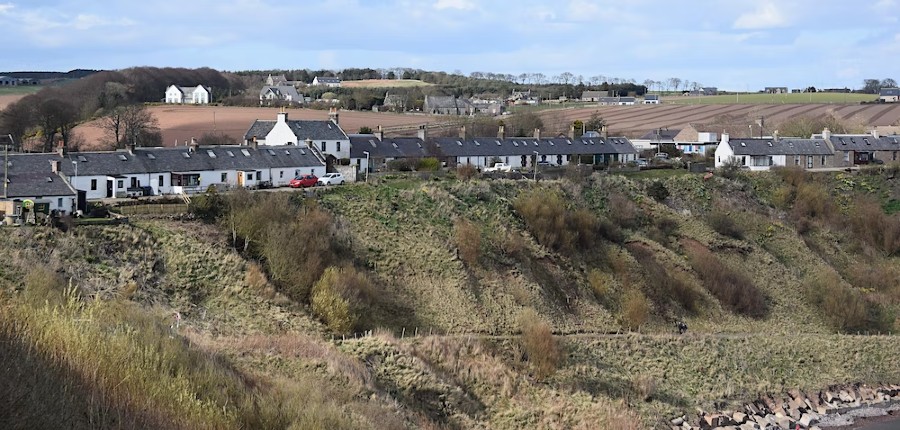Research project protects historic fishing village

Glasgow Caledonian University is pioneering research into protecting towns and villages from the growing threats of coastal erosion, flooding, and landslides.
The work began in 2018, with a four-year project to protect the coastal village of Catterline in Aberdeenshire. As part of the EU-funded OPERANDUM initiative, which focuses on nature-based solutions to address environmental risks, Glasgow Caledonian’s research team has worked closely with the local community to implement eco-friendly interventions. These efforts continue in other villages and islands around Scotland, aligning with the core values of COP29, the 2024 UN Climate Change Conference, which emphasises sustainability, community involvement, and climate resilience.
Catterline, a picturesque village that has long been an inspiration for artists such as Joan Eardley, faces increasing risks due to the effects of climate change. Half of the village’s one-kilometre bay is considered at high risk of erosion, endangering homes and key infrastructure such as the access road to the harbour. To tackle these issues, Glasgow Caledonian explored sustainable alternatives to
conventional engineering approaches. Instead of relying on concrete, the University’s team of civil engineers, planners, and environmental specialists developed solutions that use natural materials such as trees, reclaimed timber, and biodegradable materials to stabilise the coastline. These methods are designed to blend into the landscape, preserve the area’s natural beauty, and maintain biodiversity.
The project in Catterline was part of the larger OPERANDUM initiative (OPEn-air laboRAtories for Nature baseD solUtions to Manage environmental risks), led by the University of Bologna, and was one of 22 projects funded under the EU’s Horizon 2020 programme. Glasgow Caledonian secured £540,000 from the fund to devise innovative ways of protecting the village from coastal erosion and landslides over the course of four years. Catterline was one of seven European sites selected to serve as “open-air laboratories” for testing and developing nature-based solutions.
Professor Rohinton Emmanuel, the project’s lead investigator at Glasgow Caledonian, emphasised the importance of working with the local community to ensure the long-term success of the project.
“We looked to do something different with natural solutions that achieve the same goals as traditional engineering,” he explained. “The solutions were co-designed and co-deployed with the community. It’s civil engineering, but not in the conventional sense — it’s using nature in a different way.”
The project’s community-centric approach was crucial to its success. It involved discussions with residents, landowners, and community groups in Catterline, with local stakeholders playing an active role in the design and implementation of the interventions. The project’s collaborative nature ensured that the solutions met the specific needs of the village, while also empowering residents to take an active role in safeguarding their environment going forward.
This close cooperation with the community reflects one of the core principles of COP29 —empowering vulnerable populations to build resilience against climate impacts. Glasgow Caledonian’s work in Catterline exemplifies how local communities can be engaged in the fight against climate change, fostering a sense of ownership and responsibility for long-term environmental sustainability.
Professor Emmanuel added: “As COP29 emphasises the urgent need for innovative, sustainable approaches to combating climate change, Glasgow Caledonian’s work in Catterline is a prime example of how academic research can translate into practical, scalable solutions. By using nature to protect the coastline and engaging the community in every step of the process, Glasgow Caledonian is ensuring that its interventions not only safeguard Catterline today but also serve as a blueprint for future climate resilience efforts.”
